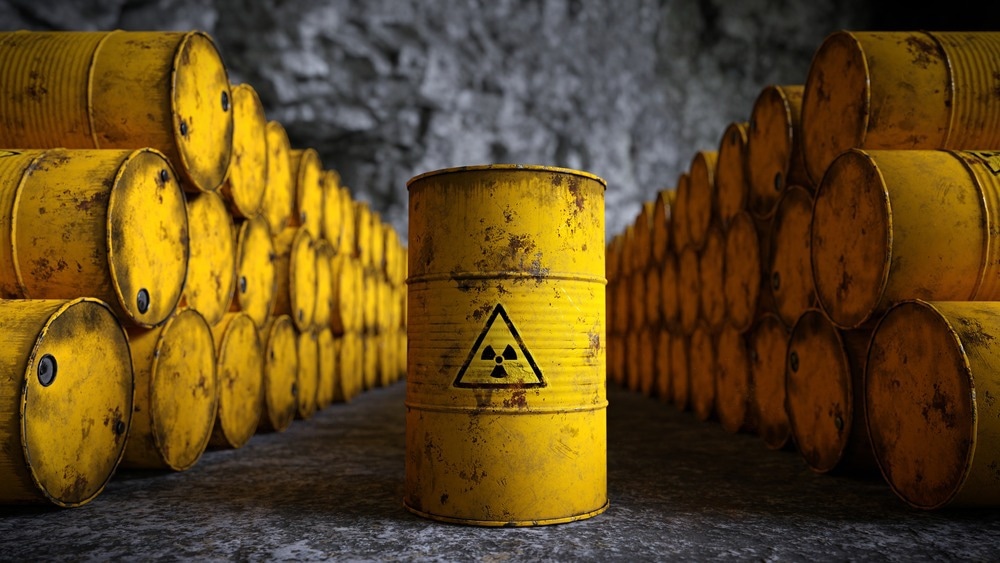Throughout decades of nuclear industry activity, tons of radioactive uranium waste have accumulated, contaminating the atmosphere, surrounding regions, and groundwater, with the potential to cause oncological illnesses in people. Traditional analytical techniques are difficult to apply on-site for real-time uranium analysis due to their pricey instruments and time-consuming preparation procedures. As a result, numerous researchers began to focus on the subject of uranium sensors.

Image Credit: Dotted Yeti/Shutterstock.com
Why is Monitoring of Uranium Important?
Uranium has been discharged into the environment due to the growth of nuclear industries, causing health risks due to its radioactive and chemical toxicity. All countries have strengthened nuclear power plant safety inspection following the 2011 Fukushima disaster. As a result, developing highly effective and simple-to-use uranium detection technology is critical.
Uranium concentrations in non-contaminated environmental waters range from 1-3 ppb, which does not pose a health or environmental risk, but this number can be far higher in contaminated areas.
Due to its hardness, high density, and pyrophoric qualities, depleted uranium has been used as armor-piercing ammunition in several international military confrontations. Depleted uranium is then released into the environment due to the development and testing of these ammunitions.
How Can Sensors Help in Detecting Uranium?
Numerous analytical techniques have been developed to detect uranium, including X-ray fluorescence spectrometry, inductively coupled plasma mass spectrometry, mass spectrometry, laser-induced fluorescence spectroscopy, and atomic absorption spectrometry.
Unfortunately, due to equipment cost and laborious pretreatment methods are difficult to conduct on-site uranium analysis. Therefore, numerous researchers began to focus on uranium sensors.
Types of Uranium Sensors
Sensors Based On Optical Detection
Trace quantities of uranium are typically detected using optical sensors based on phosphorescence, colorimetry, UV-visible absorption, and surface plasmon resonance transduction techniques.
Colorimetry Sensors
Due to the sensor's interaction with the uranium ions, the color of the solution would change as the uranium ions were injected. The color of the solution would deepen when the uranium ions concentration is increased.
Sensors Based on Ultraviolet-Visible (UV-vis) Spectrophotometry
There has been significant progress in developing sensors to detect uranium ions using UV visible spectrophotometry in the last several decades. UV-vis spectrophotometry is simple to use and allows for quick analysis.
The key process is changing the ultraviolet absorption peak before and after the ligand is coupled with uranium ions to achieve quantitative and qualitative detection.
Sensors Based on Electrochemical Detection
Electrochemical approaches for detecting uranium ions have also shown to be useful in developing uranium sensors. These sensors are classified as impedance measurement, voltammetry, and potentiometric approach based on the difference in electrochemical impedance, voltage, and current.
Voltammetric Sensors
Voltammetry is a commonly used technique in uranium sensors. The fundamental method is that a uranium-sensitive substance is doped onto an electrode. Then uranium ions are detected qualitatively or quantitatively by detecting the electrode's electrochemical signal change in the absence and presence of uranium ions.
Sensors Based on Impedance Measurement Technique
Electrochemical impedance spectroscopy (EIS) is nondestructive in a steady state and does not need sample destruction. It measures the electrode-electrolyte interface's alternating current electrical impedance at equilibrium.
Small sinusoidal stimulus voltages of varied frequency are used to construct the EIS sensor, which is then used to measure the current (or voltage) that results from the ligand recognition events. The key advantage for EIS sensors, the sinusoidal stimulus voltage is minimal and does not harm or affect the ligands layers.
Potentiometric Sensors
The potentiometric approach uses an ion-selective electrode (ISE) to perform quantitative measurements of metallic ions in solution. Sensors based on ion-selective electrodes have been extensively employed in detecting uranium ions in complex mixtures due to their short reaction time, low cost, and high selectivity.
Whole-Cell Uranium Sensor
Scientists at Lawrence Livermore National Laboratory created a whole-cell uranium sensor by merging two functionally independent signaling systems, UzcRS and UrpRS, within the bacterium Caulobacter Crescentus.
The researchers discovered that their combinatorial strategy for building whole-cell sensors showed higher selectivity in analyte detection than a previous biosensor developed only with UzcRS. They validated the sensor's functioning in an environmental context by identifying uranium in groundwater samples with extremely low uranium concentrations.
Future Outlooks
Uranium has been widely employed in nuclear power plants, and its use is anticipated to increase as a key energy source.
It has the potential to be discharged into the environment during its lifetime. A method for detecting and quantifying uranium that is fast and simple will be valuable in environmental remediation and reducing uranium exposure to the environment and human population.
While the technology for environmental uranium detection exists, it is still challenging to sample huge areas that remain unknown to be contaminated with uranium. Thus new detection methods must be developed to overcome this obstacle.
A mobile sensing system with a high spatial resolution is required to evaluate uranium contamination issues and monitor uranium remediation's efficiency.
References and Further Reading
Cennamo, N., Pesavento, M., Merli, D., Profumo, A., Zeni, L., & Alberti, G. (2022). An Optical Fiber Sensor System for Uranium Detection in Water. Engineering Proceedings, 16(1), 10. https://doi.org/10.3390/IECB2022-12296
Park, D. M., & Taffet, M. J. (2019). Combinatorial sensor design in Caulobacter crescentus for selective environmental uranium detection. ACS Synthetic Biology, 8(4), 807-817. https://doi.org/10.1021/acssynbio.8b00484
Wu, X., Huang, Q., Mao, Y., Wang, X., Wang, Y., Hu, Q., ... & Wang, X. (2019). Sensors for determination of uranium: a review. TrAC Trends in Analytical Chemistry, 118, 89-111. https://doi.org/10.1016/j.trac.2019.04.026
Disclaimer: The views expressed here are those of the author expressed in their private capacity and do not necessarily represent the views of AZoM.com Limited T/A AZoNetwork the owner and operator of this website. This disclaimer forms part of the Terms and conditions of use of this website.